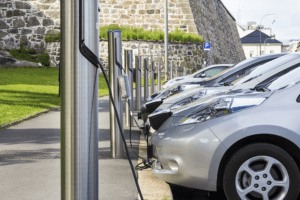In this blog series, we’re looking at preparing commercial buildings for occupants returning to the workplace, and how smart building technology can help you operate more efficiently and effectively under the ‘new normal.’ In these next two posts, we’re taking a deeper dive into the steps needed to ensure occupant well-being.

Recent events have made it clear to building owners and operators that it will now be required to provide a healthy indoor environment for employees, customers, and all other occupants. During and post-pandemic, building management systems (BMS) will play a key role in providing clean, healthy air as well as thermal comfort. A BMS that doesn’t work correctly will have a negative effect on the air quality inside of the building.
Facility teams should follow a formalized, structured set of best practices to make sure the BMS is working properly, and that indoor air quality (IAQ) and thermal comfort are optimized. A combination of newest technologies and services can help facility teams simplify these requirements and make sure that the right choices are being made to provide a healthy and energy-efficient building for returning occupants.
1. Audit and Assess
The first step is for the site to be thoroughly audited and assessed. The audit will create a ‘map’ to define current capabilities, identify gaps, and list specific agreed actions for the building owner, manager, and any contracted services.
It is during this audit that the capabilities of the ventilation systems should be analyzed so it can be determined if it can be adapted to meet the latest recommendations from organizations such as ASHRAE, including:
- Promote an increase in minimum of fresh air levels
- Limiting recirculation and some heat recovery systems
- Introducing higher grade filters, e.g. MERV-13 (EN-F7) and MERV-14 (EN-F8)
- Closer monitoring and control of humidity (between 40% and 60% rH)
All of these recommendations need to be considered and thought through. It is during this stage that collaboration is essential with other experts and your controls provider to make sure the control strategy and desired goals are achievable.
2. Update Sequences and Recommission
Once the audit has been carried and the strategy agreed upon, the controls logic will need to be modified. New control setpoints for airflow will be provided after the system has been balanced. Changes in sequencing of dampers will be needed, along with new alarm thresholds, etc.
It is recommended to provide a global function as part of the controls sequence changes. This will allow the ventilation systems to operate in a ‘new normal’ mode, but also revert back to ‘normal’ mode as needed.
This new mode will allow for:
- Maximizing the amount of fresh air coming into the system (ASHRAE recommends two air changes per hour of outside air) and limiting recirculated air from occupied spaces.
- Limiting demand control ventilation – i.e. occupancy and CO2-based control – for ventilation systems, as it is more important to provide the target air change per hour to benefit public health. It is important to still monitor and log occupancy and CO2so more insights can be gathered and the system optimized over time.
- Adjusting the airflow requirements – e.g. controlling via variable speed drives – to meet the required air change rates for the space and adjusting air supply volume (within limits) to take into account the impact due to filters becoming dirtier.
- Limiting users’ ability to change or override the BMS. Stricter controls are recommended regarding who on the facility team has permission to control setpoints. Any changes should be carefully coordinated with management with consideration for impact on infection control.
At this stage, recommissioning of the systems will bring multiple benefits. This can include simple energy efficiency savings. But it will also ensure proper operation of control signals and control sequences, and making sure variables are being logged and trended. These checks will ensure the system is working optimally.
It’s also worth thinking about taking this opportunity to connect the BMS to cloud based analytics, where advanced fault detection can be provided to ensure the systems continue to work as designed.
3. Occupant Well-being Monitoring
Employees want to feel confident that the facility is kept to optimum level of air circulation when making the choice to return to work. Advances in sensor technology now make it feasible to bring a full-comfort ‘360 view’ to the forefront. This will help building managers to make decisions and be pro-active. It will also help bring transparency so that occupants and employees can see that the facility has been transformed to a safe workplace.
Some of the technologies that can be used include:
- Simple-to-install, battery-powered IoT sensors that measure key comfort parameters such as: temperature, relative humidity, CO2, volatile organic compounds (VoC), light levels, etc. These sensors push data to a central aggregator with cellular connectivity. Data is collected over time to help generate deep insights and a record of IAQ in the building.
- Building managers can use this data to cross-check comfort and safety conditions, for example, is humidity across the building is being maintained within ASHRAE guidelines for 40 – 60% to reduce the risk of infections. Monitoring can also detect if excessive cleaning is causing an unhealthy rise in VoC levels, or if lack of proper air circulation in some areas is causing CO2 build-up.
- Remote advisory services can help rank each space on the various factors of IAQ impacting comfort. This can help the facility manager simplify the identification of spaces or areas needing attention. IAQ parameters will be recorded so that changing conditions over a typical day can be tracked and analyzed.
- Sensor data visualized and analyzed by advisory services can be fed to an employee engagement platform. Using a kiosk or mobile app, employees can access comfort scores for the building or a floor, helping ensure them of well-being conditions throughout the workplace.
Solutions like these can help accelerate the transition of organizations that aspire to meet healthy building standards, such as those led by Well, Fitwel, and LEED. These standards typically require active ongoing monitoring of IAQ and comfort conditions in a building.
In my next post, we’ll look at how continuously measuring conditions and adjusting building controls can help sustain occupant well-being, while balancing building health against energy efficiency. Learn more about our connected EcoStruxure Building solutions, including Workplace Advisor, designed to help you effectively manage space utilization, communications, and create healthy buildings that operate efficiency during a return to the workplace.



